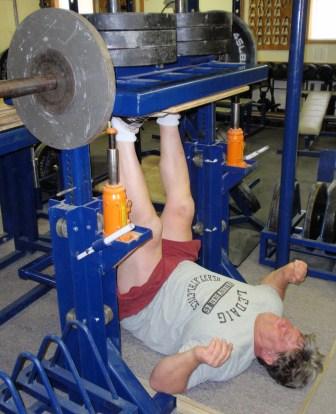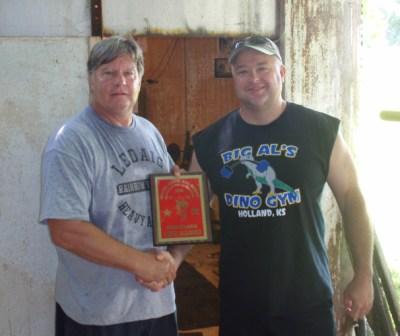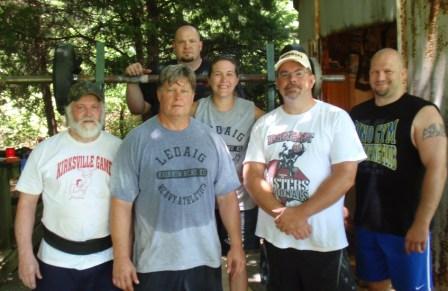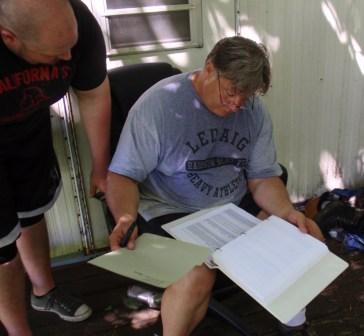A New Lift – The Foot Press
by Al Myers

Dave Glasgow, Newcomer of the Year for the USAWA, performing a Foot Press with 1050 pounds at the 2010 Dino Gym Challenge.
Last January at the 2010 Dino Gym Challenge, I presented a meet in Arthur Saxon’s memory which I called the Arthur Saxon Pentathlon. The meet contained five of Arthur’s favorite lifts. Only one of the lifts in this meet was not an official lift of the USAWA – the Foot Press. This lift was popular with other Old Time Strongmen such as Hermann Goerner, Warren Lincoln Travis, and Milo Steinborn. It was often performed in their Strongman Shows, usually with people from the crowd sitting on a plank resting on their feet to provide the weight needed to complete the stage act. The USAWA does not have a lift similar to it. I would consider the Foot Press as the “Heavy Lift” version of the Leg Press. This lift can be done in pretty much any gym that has a Vertical Leg Press or Back Lift Apparatus. It was a “big hit” at the Dino Challenge as an Exhibition Lift, and because of that I presented it to the USAWA to be approved as a new official lift. I was glad the membership approved it at the National Meeting.
Our mission statement states, “The USAWA was formed to continue the long standing tradition of old-time weightlifters like Eugen Sandow, Louis Cyr, Arthur Saxon, Hermann Goerner, Warren Lincoln Travis, and many others. We strive to preserve the history of the original forms of weightlifting, which in the past has been referred to as “odd lifting”. Many of the lifts we perform are based on stage acts or challenge lifts of old-time strongmen.” The Foot Press is an excellent example of a lift that fits our mission statement!!
Rules for the Foot Press
An apparatus is used in which weight is loaded onto the feet only while the lifter is laying on his/her back on the floor/platform with the legs vertical and perpendicular to the floor. The apparatus used must allow the weight to rise without providing any leverage to the lift, but may be guided in a tract. It is also acceptable to use a plank resting on support platforms. The lift starts at the lifter’s discretion. Hands may be placed on the legs or any part of the apparatus, but must not be used to push directly against the weight being lifted. The hands may remain on the legs throughout the lift, and upon the finish of it. The weight lifted must clear the supports and be held motionless, at which time an official will give a command to end the lift.
The Foot Press will be included in the 4th Edition of the USAWA Rulebook that will become effective August 1st, 2010.
Trivia on the Foot Press: Arthur Saxon best reported Foot Press was 3200 pounds.



